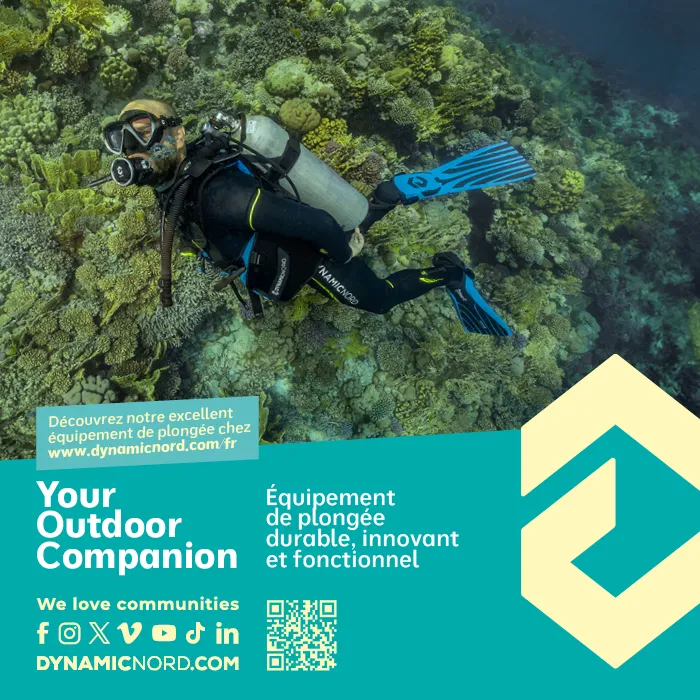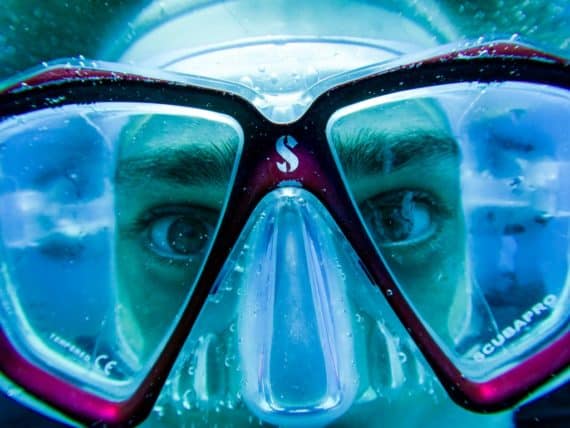Diving in galapagos: Top Biodiversity

Ecuador, Diving in Galapagos: Top Biodiversity
In 2020, I had to fly to this dream destination to meet an incredible biodiversity. However a small virus forced us to change our plans. Finally, from postponement to hope, I take off in March 2022 to go diving in the Galapagos.
Why you should definitely go diving in galapagos
I’m not spoiling anything by saying that it’s THE PLACE TO BE. The destination where you can see absolutely everything underwater. Sharks, green turtles everywhere, moray eels, iguanas, whale sharks, dolphins, sea lions, schools of fish, rays…
But above the water, it is also impressively rich.
The archipelago, located +/- 1000 km from the Ecuadorian coast, is composed of about forty volcanic islands. Very clearly, it is a paradise for nature lovers and a destination at the top of the world’s biodiversity.
Blue footed booby, frigates, giant tortoises, iguanas… On the surface and underwater, it’s impressive. I was conquered.
The Galapagos became a national park in 1959 allowing organized tourism to develop. Good news, during COP26 in November 2021, Ecuador decided to expand the area to more than 60,000 km2, creating a huge and preserved protected area.
Diving in the Galapagos: The spots I particularly enjoyed
Darwin and Wolf
Two islands lost in the middle of the ocean at more than 20 hours of navigation. (I guess you understand the importance of being equipped with a Marine Rescue GPS there). Diving in the Galapagos is sometimes hard !
The water is warm and clear. There are strong currents. The underwater life is just exceptional. Impossible to know where to look. There are animals absolutely everywhere.
At first, I see a turtle, and moray eel in open water. And then everything becomes “normal” because they are everywhere. Just like the rest of the wildlife. But I understand very quickly that we do not come here for that. Here it is schools of hammerhead sharks that we want to see.
And when they point their recognizable heads the tick of the clock stops and nothing else exists, only our hearts in sync with the ocean… and the flashes of our cameras crackling.
The islands of Darwin and Wolf are impressive. Uninhabited, they have a fascinating wild side. Firstly, even if the arch is collapsed, it is its mythical name that calls out.
When I’m there, the weather is pretty overcast. Dolphins are all around us. Wolf is more stretched. The collapsed caldera allows us to navigate inside. The spots are varied. I love it.
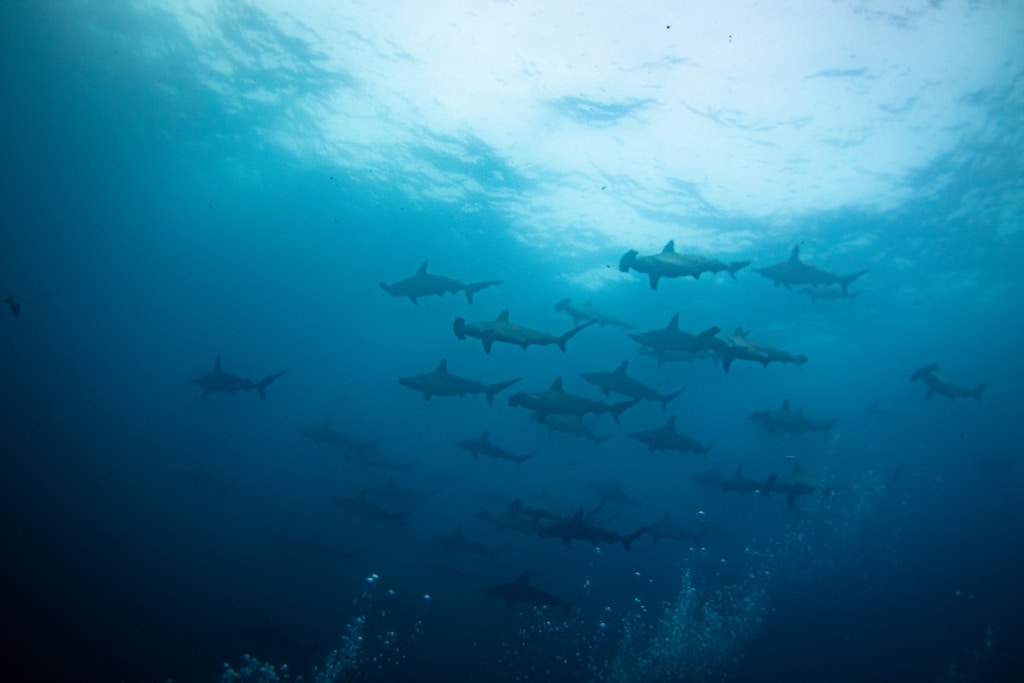
Cabo Douglas
Without a doubt the most original dive of the stay. Diving with marine iguanas is a really crazy experience that I LOVED. It is a unique dive in the world. It was also the place where I was able, for the first time, to spin in the company of a sea lion in a playful mood.
This is probably the most extraordinary experience of my stay (Ok, I’m a good audience, I admit). As I check my photos on the boat, I could see that even at the safety stop, while I was taking a selfie, this sea lion was not that far away.
Fernandina
Stuck in the western part of the Isabela island, the Fernandina island, at the punta Vicente Roca, is famous for sunfish (Mola-mola). But also for the penguins who come to bathe there.
Nature is like this, I was not in the right group to see neither the mola-mola nor the penguins (the other group was able to observe them). The fact remains that in my eyes, Fernandina’s drop-off is the most beautiful drop-off in the world; for colors and wildlife all around you.
Cruise or dive from the edge?
Keep in mind, the navigation is long to reach the remote islands of Darwin and Wolf.
But the liveaboard cruise is certainly the only way you will have to explore the most beautiful dive sites of the Galapagos. However, there are also dive-shops that go half-day or daily. Unfortunately, they will only be able to take you to relatively close spots with sometimes poor visibility.
Don’t worry about crowded spots, most of the time you will be the only boat to dive a spot, quite nice.
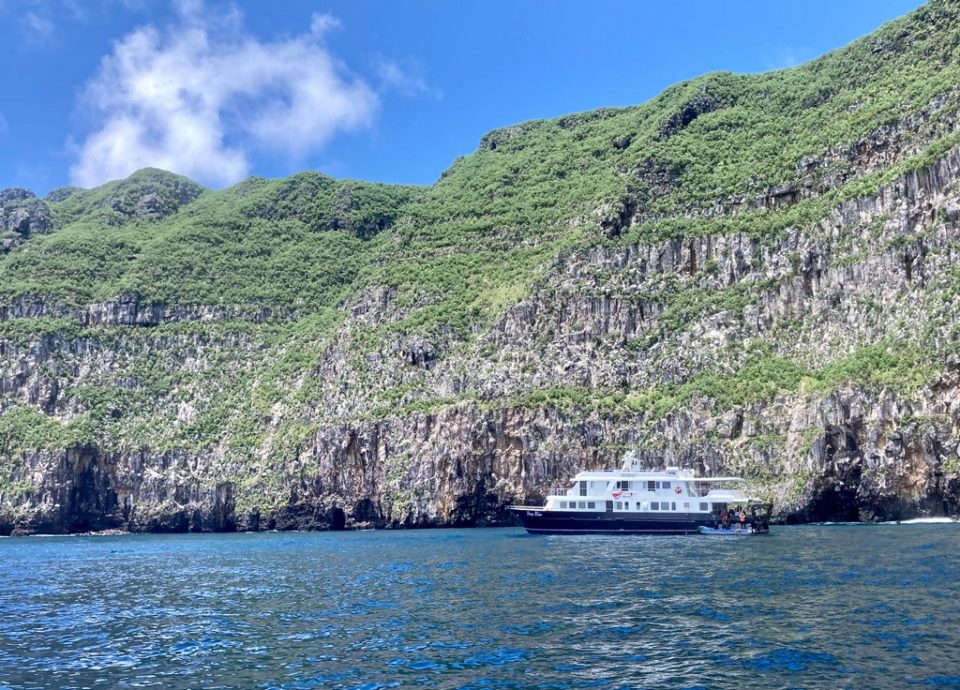
My choice
As I wanted to discover the remote islands of the north,I chose the cruise option.
The dives follow one another throughout the duration of the stay at a rate of 4 dives per day. It’s intense and tiring. The rhythm is invariably the same. First dive at 6:30 am, last at 3:30 pm. Between these two slots, it is necessary to stall the breakfast and the lunch break.
Divers take advantage of every moment to take a nap. Indeed, do not hesitate to skip one or the other dive, even if on this destination at the end of the world, it is complicated to “give up”. It remains important to rest, because, it is well known, diving fatigue. Personally, I zapped 2 or 3 dives.
On the boat, the crew also ensures hydration. A glass of water is offered to divers when they are equipped, just before stepping in the rib. Fruit juice and hot chocolate was proposed when back from a dive. The goal is not to let dehydration put us at risk.
Meals are plentiful and varied. The atmosphere is excellent in this international group mixing divers from the all around of the world. Strangely, 6 people speak Dutch on the boat. So, I’m a bit transported to my dives in Zeeland.
READ | The World Tour of Gastronomic Diving
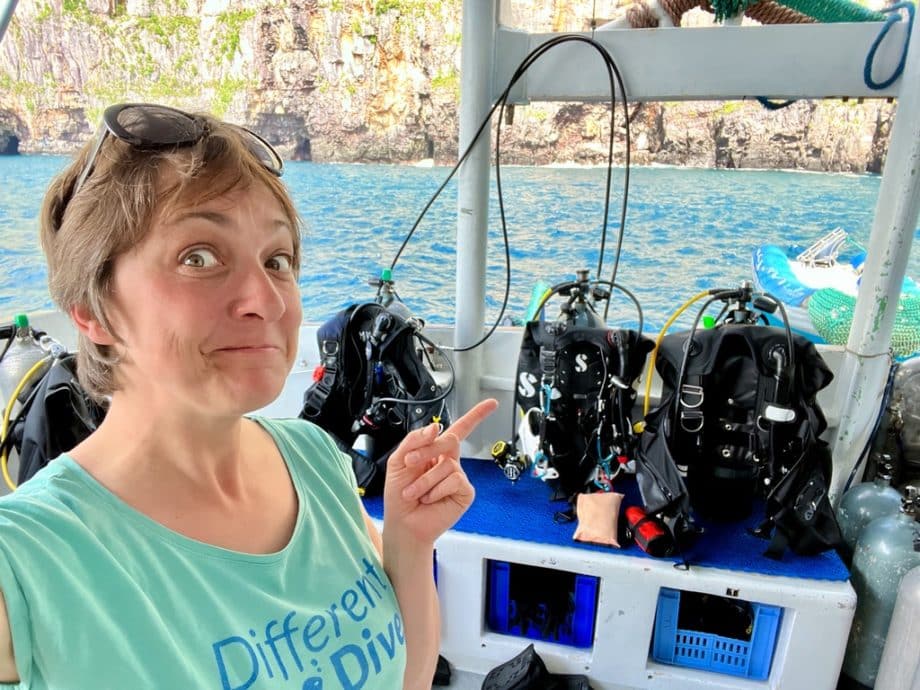
Feedback
Without a doubt, I loved going diving in the Galapagos.
On the other hand, I do not know what I liked the most: the immersion in nature, the distance from the rest of the world, the power of the ocean, the originality of what we saw… the organization and life on the boat, the group, the walks on land.
A smooth start
It must admit that when the boat left San Cristobal under a nice blue sky, I did not expect anything special. The first “check dive” was short and offered little visibility.
The next day, after a walk on land to see the Blue footed booby and cormorants, we dive in rather cold water, rather greenish (looking a little like some quarries in the north) and to be honest, quite poor. It was the time for for a second check dive.
While the rest of the team went in search of one or the other marine animal, I took the opportunity to spin with a very curious boxfish. After that we head to the northern islands.
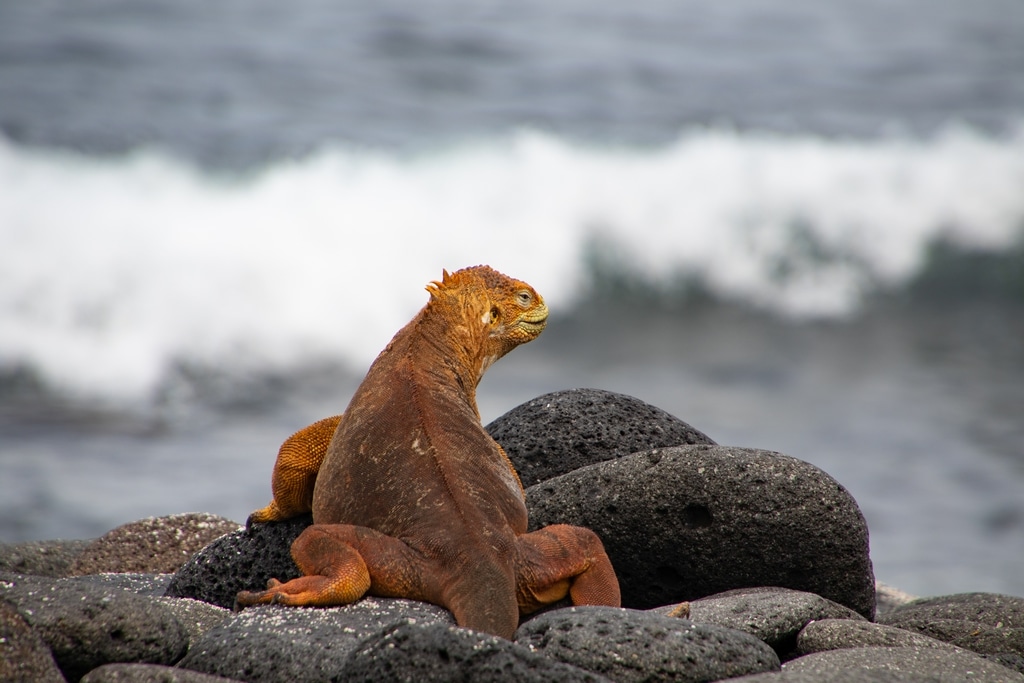
The northern islands
During the crossing, it was curious to see that birds were following us. How did they continue their flight at night so far from the coast?
The spectacle that night was above our heads where the Milky Way stretched out, majestic.
The dives on Darwin and Wolfs competed in beauty. Between schools of hammerhead sharks, dolphins (huge), the multitude of multicolored fish, carpets of starfish or caves hidden in the rock, it is difficult to put your gaze on something.
On Darwin, the weather was gray and the rain sometimes beat the surface of the ocean as we ascent giving a special impression to our dives.
On the contrary, around Wolf, above the water, the drop-offs are full of vegetation giving the island a wild, exotic aspect. The dives followed the same spirit by being diverse and sometimes mysterious.
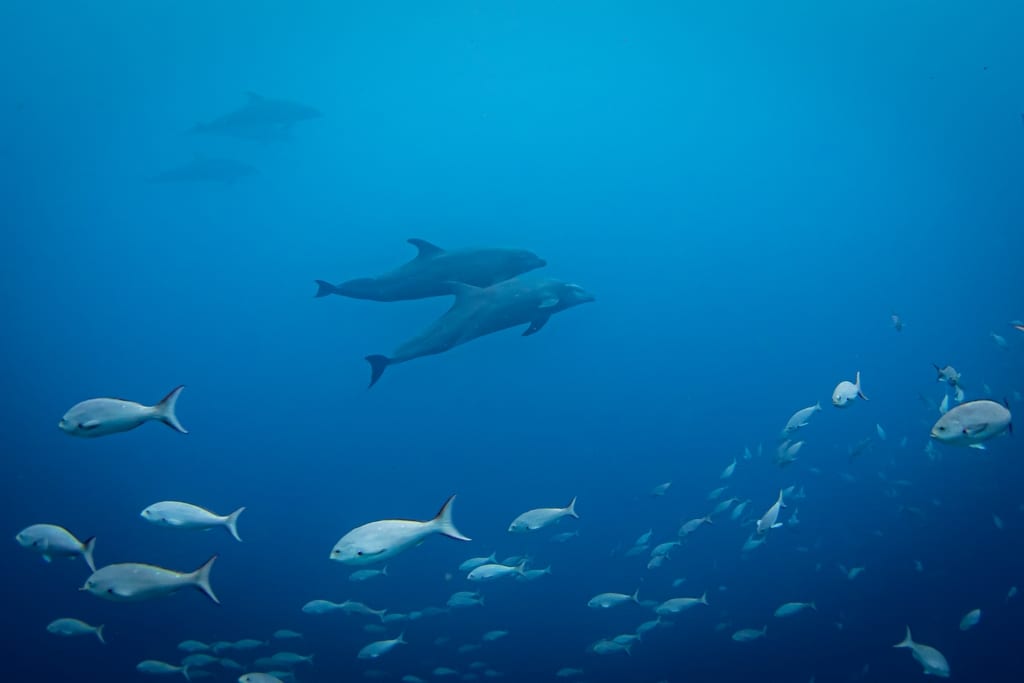
Back to the central islands
After four days away from the central islands, we go back there. Marine iguanas, sea lions, penguins and other cormorants that spun underwater gave full meaning to having come to dive in the Galapagos.
Small troubles
Perhaps it was due to the cooler wind or the temperature of the water around 18°C. I caught an externa otitis. Bad luck. However, I have been careful. Yes, but that’s the way it is !
Fortunately, a couple of divers offered me a bottle of magic drops. In one night, everything was repaired (but in reality I still had to continue the treatment for 7 days).
This is also the time when my main camera decided to stop working. Indeed, the lens refused to focus anymore. Can you imagine the frustration?
So I had to fall back on my TG6 (without flashes) and on my Divevolk which was fortunately part of the game.
Finally I thought, this breakdown perhaps allowed me to enjoy even more the immediacy of my dives. So, I became a philosopher and benefited greatly from it.
READ | This dive that I will not tell you about

Santa Cruz
While we had done our last dives in Bartolomé, we were able to get back on land. What a strange feeling to come back to life. To catch phone signal again.
To see people. In the city of Puerto Isidro Ayora, instead of visiting the turtle zoo, my buddy and I decided to stroll along the docks. Observing marine iguanas, sea lions, lazily taking the sun, surrounded by the cries of children who jumped into the water with happiness.
This excursion had the flavor of this city in the middle of nowhere and also the taste of the end of our trip to the Galapagos. But it was good.
Underwater life
Profusion, serenity and exclusivity. These are the three words that naturally come to mind when I think of the underwater life there. Indeed, diving in the Galapagos is above all diving in an absolutely exceptional environment.
Marine animals do not seem frightened of our presence. Same on earth, it is rather up to us to be wary. The birds let themselves be approached, the iguanas too. It is as if they had not signal in their brains that human beings could be dangerous for them. What a chance!
Underwater, sea lions come to meet us to play when they are not busy hunting.
Marine iguanas let themselves be approached, turtles, rays and other fish are so close that you sometimes do not know how to avoid touching them.
Moray eels roam in open water. We no longer look at turtles (which are everywhere), rays, moray eels… so many sharks and other sea lions
Wildlife is not fierce. Fish come very close to us and moray eels roam in open water. Sharks do not care about our presence. Everywhere, nature is wild and preserved. At the end of the day, the manta rays jump out of the water offering magical moments.

What activities to do in Galapagos?
In addition to going diving in the Galapagos, these islands allow you to have many activities, all oriented towards nature.
- Observing all endemic species, just happiness.
- Climb a bit to observe the panorama in Bartolomé.
- Discover the land turtles that are more than 100 years old.
- Enjoy to see the sea lions wallowing on the docks of San Cristobal.
- Visit the exotic island of Floreana.
- Entering the cabo rosa tunnels
- Smile in front of Seymour Norte’s blue footed booby.
- Have fun trying a lot of marine sports.
- Enjoy a day of idleness on the most beautiful beach on the island in Tortuga Bay.
- Hike around the active Volcano Sierra Negra.
Personally, I did not see the giant tortoises, because on the afternoon in Santa Cruz, the only way to see them was to visit a kind of zoo where they are parked. As I do not like zoos at all, I opted for an drink near the port. Everyone has their own thing.

Practical information:
When to go diving in Galapagos?
There is no right or wrong answer. The Galapagos can be visited all year round. Underwater, you can observe a fauna a little different according to the seasons.
So there are two main seasons. The hot season from January to May with very pleasant temperatures (from 23 to 30 ° C). It is during this period that you can also enjoy some rather short showers, but impressive views underwater.
The sea is generally calm and the wind weaker. The cold season from June to December is colder (+/- 20°C), as the name suggests, but also drier. During this season, the wind is stronger and the sea more rough.
Underwater, temperatures will range from 18 ° to 26 ° C during the hot season. They will be cooler from June to December.
For underwater life, you will have, for example, more chance to cross mantas in the warm season. But you will see whale sharks in the cold season. The best time to observe hammerhead sharks is from June to September.
After that, everything remains a question of nature, of time… and a bit of luck.
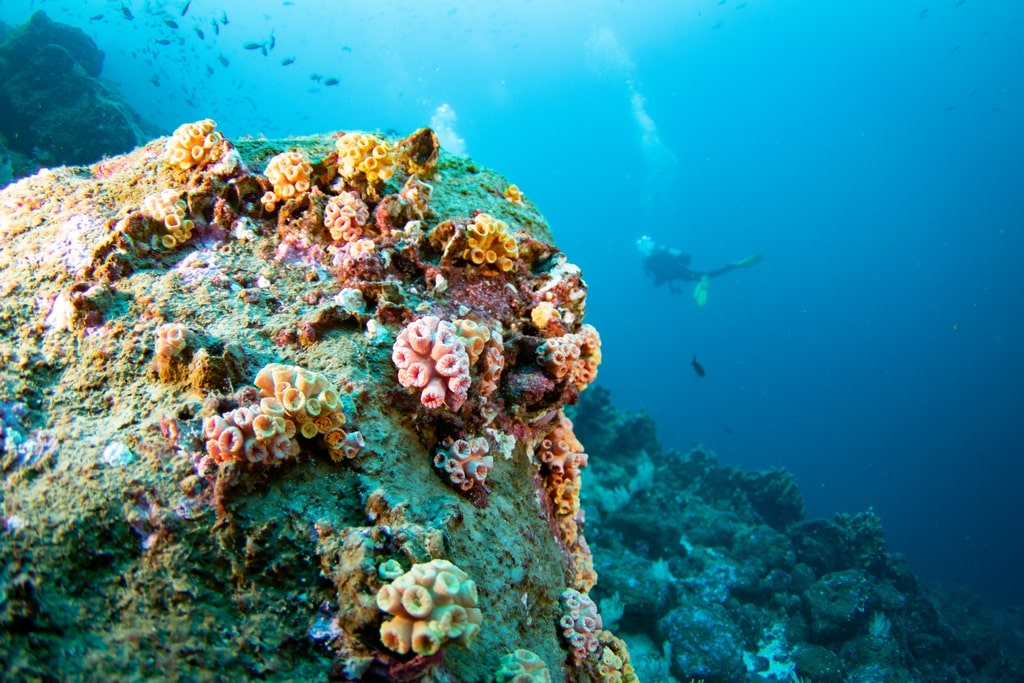
What equipment to take with you?
It is necessary to provide a suitable and sufficiently warm wetsuit. Even if the very marked thermoclines may make you feel too hot in the first 10 meters (especially in the isolated islands of the north), believe me, further down, we appreciate the extra layer.
Also think that even if you are in Ecuador, cold currents cause water temperatures to drop relatively uncomfortably. Also bring gloves, booties (especially in the cold season) and hood. The currents that “chase” in your ears could play bad tricks on you.
Keep in mind that it is important to protect your ears while diving.
How much does it cost?
Dear, you doubted it?
The cheapest solution is probably to stay ashore and take a daily… although. There are many diving spots around the inhabited islands. So you can dive in the Galapagos also in this way.
But this option may make you miss the most beautiful marine observations. It seems important to me at least to go see the marine iguanas in Cabo…
If you choose a stay “on land”, be sure to schedule it by going to several islands. Travel is by ferry between inhabited islands.
Dive cruises are obviously the most suitable solution to see big fish and a lot of fish. However, these boat trips, which have nothing to envy to those you find in Egypt, will cost you several thousand euros for a week (even more for 10 days).
The budget is substantial to go diving in galapagos. You might as well know it.
How to get there
From Europe, there are many companies that serve Ecuador. However, you will have to make a stop either in Quito or in Guayaquil. From there, you will take another flight to the Galapagos.
The plane ticket to Ecuador will cost you between 900 and 1500€. To this you will have to add the ticket to the Galapagos for +/- 400€.
As I had decided to spend a few days in Quito, I had to make an additional stop, on the way to and from Guayaquil.
More details
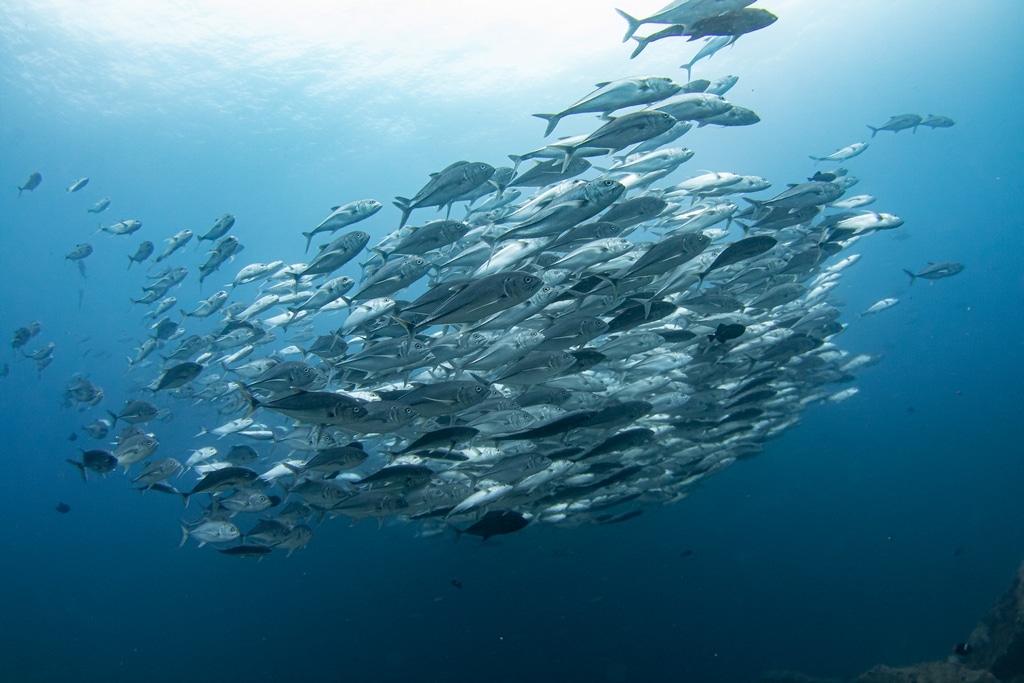
Is it worth it?
There are curiosities that can only be observed in the Galapagos, and that are sensational. But it is perhaps the entire biodiversity, under and above the water, that amazes the most. Its richness is priceless and provides even more incentive to preserve the oceans.
Diving in the Galapagos gave me this feeling of penetrating almost virgin areas, of being “alone in the world”. I found absolutely everything I expected and came out with stars in my eyes from each dive.
Of course, the price and duration of the trip can obviously be a show stopper. If this is not one for you… go for it!
READ | The Powerful Song of the Oceans
Did you dive in the Galapagos? Have you ever been there?
Tell me that in the comment of this post.
And above all… don’t forget to be happy 🤗
Helene
Join me on my Instagram Page

